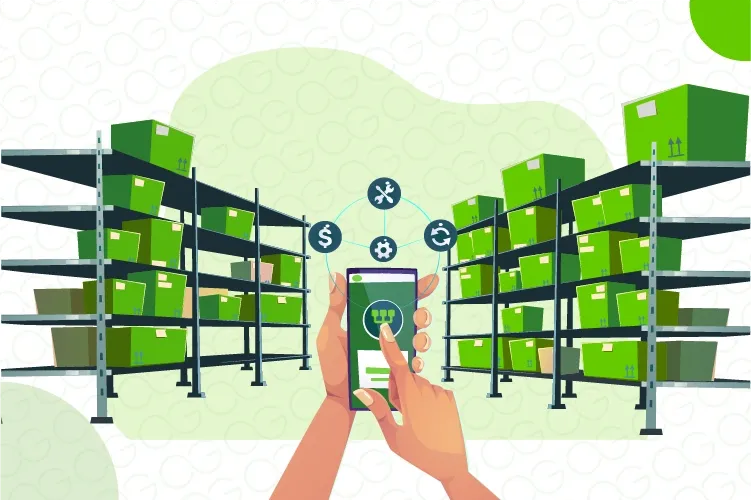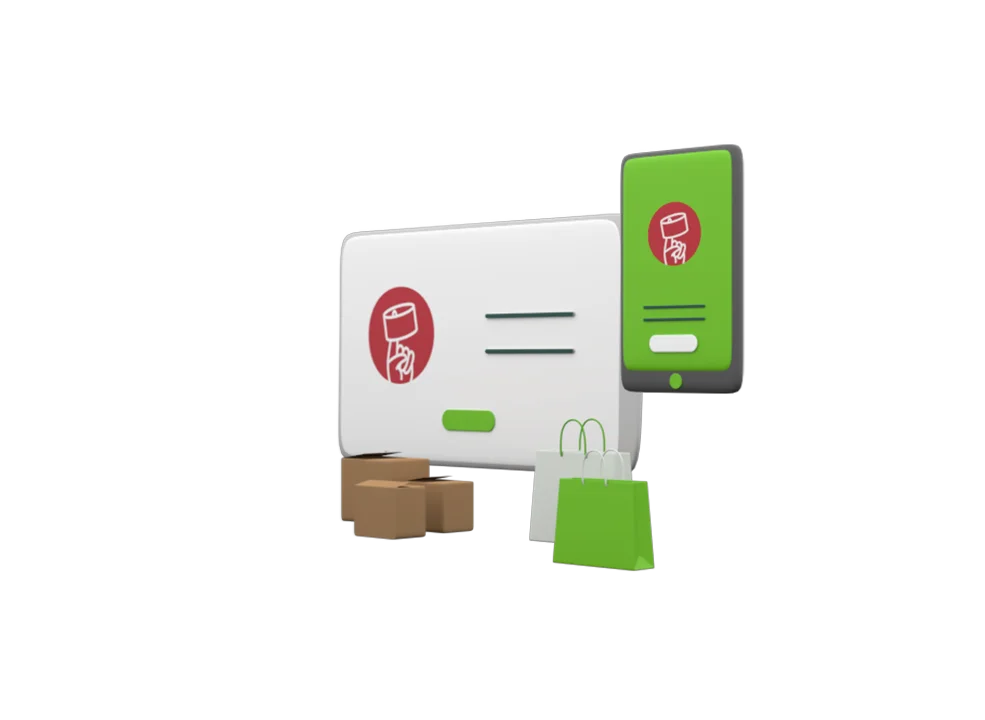Streamlining Success: Automating Your E-commerce Order Fulfillment Workflow

You’ve just launched a new product. Sales surge. Your inbox is flooded with orders. But behind it all? Chaos. Packing slips become mixed up. Inventory data is out-of-date. One delayed delivery turns into a negative review.
In a digital-first world, customer expectations outpace what manual fulfillment can deliver. Customers expect their orders to arrive quickly and without error, leaving little room for manual inefficiencies. As your business scales, so does the complexity of order fulfillment—from inventory checks to shipping logistics. That’s where automation steps in. By streamlining fulfillment workflows, automation not only saves time and reduces errors but also enhances customer satisfaction and operational scalability. In this blog, we explore how automating key stages of your order fulfillment process can drive efficiency, improve accuracy, and set your business up for long-term success.
In this blog, we will explore how automated order fulfillment boosts speed, accuracy, and scalability—while reducing errors and costs.

Automate fulfillment today—deliver faster, smarter, and error-free.
The Problem: Manual Order Fulfillment Bottlenecks
Manual processes could suffice in small volumes, but in high volumes, for growing and scaling infra, every weak link is uncovered:
- Delayed Shipping: With fulfillment depending on spreadsheets and handoffs, delays become inevitable. A study by FarEye found that 85% of consumers are unlikely to shop with a retailer again after a poor delivery experience.
- Inventory Mismatches: Say a retailer sells across Amazon, Flipkart, and Shopify stores. Without real-time sync, the team might oversell on one channel and shortchange another. That turns into cancelled orders—and angry customers.
- Human Error: From mistyped SKUs to misplaced shipping labels, manual entry is a breeding ground for mistakes. Each error chips away at the operational credibility.
- Low Scalability: Growing brands can’t afford staff fulfillment at the same pace they acquire customers. Each additional touchpoint is a risk rather than efficiency unless automated.
And the cost? Beyond the lost time, there’s real financial damage: customer churn, negative reviews, and compounding operational stress. Brands poised for growth hit the ceiling fast if they’re still depending on patchwork systems and daily firefighting. That’s where automated order fulfillment becomes essential.
So, here’s the real question: If your order volume doubled overnight, would your current process survive the week?

An E-commerce Order Management System (OMS) Explained
At its essence, an OMS is the nerve center for modern ecommerce business. It ties together all aspects of the order process—from the moment when a customer clicks “buy” to when their package drops onto their porch—powering automated order fulfillment and streamlining operations.
A robust OMS handles:
- Order Capture: Aggregating purchases from all sales channels—online storefronts, marketplaces, and offline invoices—into a single dashboard.
- Inventory Synchronization: Real-time updating of stock quantities in channels and warehouses to avoid overselling and stockouts.
- Order Routing: Selecting the optimal store or warehouse for dispatch based on location, available inventory, and delivery timelines.
- Status Tracking: Give customers and internal teams real-time order statuses, returns processing, and delivery notifications.
When all these functions work in harmony, friction disappears. Now consider siloed tools—one for inventory, another for shipping, another for analytics—where delays, discrepancies and disconnected data are inevitable. Integration is the difference between reacting to issues and preempting them—making true ecommerce workflow automation possible.
That is where solutions such as Browntape fill in. As part of Ginesys’ ecosystem, Browntape is specifically designed for multichannel e-commerce players operating in India’s fragmented market. It consolidates all the orders—from marketplaces, websites, and even offline channels—into a single integrated interface. But it’s more than just order aggregation. Under the Ginesys umbrella, Browntape seamlessly integrates with POS, ERP, and warehouse systems—offering true end-to-end visibility.
Ginesys has long been a trusted name in retail tech, and with Browntape, it extends that expertise into e-commerce execution. What's the end result? Brands get to grow with assurance, automate without compromising control, and deliver reliably—no matter how complex or big business gets.

From sale to ship, automate your entire workflow with Ginesys
Ginesys Browntape OMS Workflow – From Order to Fulfillment
Imagine this: You wake up to a flurry of orders across Amazon, Flipkart, and the Shopify store. Inventory is flying off the shelves. One wrong move—one manual entry error, one misrouted package—and the entire customer experience unravels. The stakes are high, but the solution is already here. The Ginesys Browntape Order Management System (OMS).
From the first click on a product page to the final doorstep delivery, this system automates e-commerce fulfillment into a controlled, high-efficiency sequence. Here's how every step is built not only to reduce human intervention and error but to engineer consistency at scale:
- Catalog Creation: Before a single order is placed, the product catalog must be flawless. Browntape seamlessly integrates with Ginesys Core ERP so that each SKU comes alive with the correct data, pricing, and taxonomy in place. That foundational accuracy trickles through the entire supply chain. No duplication. No inaccuracies.
- Warehouse Creation: Each warehouse—actual facility or dark store—is mapped out in the WMS (a module of the ERP) to reflect its actual layout. Think of it as setting the stage: if every prop is in place, the show runs without a hitch. Locations, zones, shelves—all mapped precisely. The benefit? Clear, automated routing.
- Inventory Sync: Here’s where most systems falter. However, Ginesys OMS makes real-time inventory synchronization across all online channels a norm. Whether a product is sold on Flipkart or through the Magento website, inventory is updated in real-time on all platforms with zero chances of overselling and cancellation losses.
- Order Capture: Orders from Amazon, Flipkart, Shopify, and Magento—are all captured in one interface. There’s no tab-switching chaos. No channel-blind spots. The OMS standardizes data from each source, so every order is treated equally, regardless of origin.
- Omni Order Routing: The captured orders don't wait idle. Smart rule-based routing sends each order to an optimal-fit warehouse or store, depending on inventory holding, proximity, SLA demands, and even the reachability of couriers. Let's say you received 3 units of a hot seller in two locations. The system auto-allocates to the one closest to the customer with the fastest delivery turnaround and you don’t even have to lift a finger.
- Picking Batch Creation: Orders get grouped into optimal picking batches. This logic-based grouping reduces walking time and increases accuracy. Each batch is prepared for quick action, whether you’re shipping 10 units or 10,000 units.
- Picking with Smart Selection from the Warehouse Floor: The picker scans a picklist, follows an optimal path routed by layout logic, and verifies each item in real-time on the picking mobile app. No printouts are required. No manual checklists are necessary. Just a digitized, directed process that understands your warehouse better than your own floor manager.
- Pack and Ship: Each item is rescanned against the picklist before being packed. This step allows for zero mismatches. Then, the system produces the packing label, shipping manifest, and invoice—automatically and all at once. The outcome? Speed without losing accuracy.
- Courier Sync: Whether you use Delhivery, Blue Dart, or eKart, integrations ensure that as soon as an order is packed, the courier is notified, and marketplaces are informed that the package is “Ready to Ship.” No need for manual uploads. No room for delay.
- Handover to Courier / Self-Ship: With scans and documents on file, handover to the logistics partner or in-house delivery fleet is seamless. And each step is traceable— nothing goes dark.
- Returns Management: Returns are no longer a black hole. Whether on the marketplace or your platform, return orders appear in the OMS in real-time. The system creates reverse shipments and tracks them until they arrive at the warehouse.
- Receiving Returns at Warehouse: When a returned product comes in, it’s scanned and checked into inventory with condition notes, restock status, and required reconciliation data.
- Analytics and Reports: From pick-pack times to order delays to return frequency, real-time dashboards offer sharp, actionable insights. Spot anomalies before they cost you. Optimize through e-commerce workflow automation.
- Reconciliation: Payments from Amazon, Flipkart, Shopify, Razorpay—everything reconciled down to the last rupee. The OMS matches dispatches, cancellations, and returns with received payments, ensuring financial clarity and zero leakage.
Every step in the Ginesys Browntape OMS is designed to replace repetitive human input with automated precision. What does that buy you?
- Fewer errors.
- Faster dispatch.
- Better customer experiences.
- More time for strategy, not firefighting.
In a market where 97% of consumers consider delivery speed important (Deloitte, 2024), automation is a lever of survival.

Streamline fulfillment from click to delivery with Ginesys
Key Benefits of Automating E-commerce Order Fulfillment
Manual order fulfillment might work at launch—but it won’t carry you through scale. As volumes grow, so do the risks: delays, stockouts, and customer churn. To meet demand with precision and consistency, automation has become a fundamental requirement. Here are the key benefits that make automated e-commerce fulfillment a must for modern brands:
- Faster Processing Times: For brands operating in high-volume windows—think festive sales or influencer drops—automation keeps you in the game. Imagine this: You’re running a flash sale. Orders spike. Without automation, your team scrambles to pick, pack, and ship. Errors creep in. Delivery windows slip. Reviews tank. With automation? The system scales instantly. Orders route, labels print, and couriers are triggered—automatically.
- Improved Inventory Accuracy: Manual inventory updates are a recipe for overselling. One mistake, and you’re canceling orders you already confirmed. Automated systems sync inventory across warehouses, marketplaces, and POS terminals in real time. Shopify data shows that brands using integrated inventory management see 30% fewer stockouts and a 70% drop in overselling incidents.
- Better Customer Satisfaction: Speed - Accuracy - Transparency. When these three align, customers notice. And they come back. Fulfillment automation enables real-time tracking, accurate ETAs, and fewer order errors. According to PwC, 73% of consumers say customer experience is a key factor in purchasing decisions.
- Scalable Operations During Sales and Events: Black Friday. Diwali. Mid-season mega deals. These events test your operations. Without automation, scaling under pressure becomes an operational bottleneck. With it, you scale effortlessly. Automated systems dynamically allocate resources, reroute orders, and optimize carrier selection on the fly. Whether you’re shipping 100 units or 10,000, the system holds.
- Reduced Manpower Costs: Efficiency is empowering humans to do more with less, not replacing them. Automation reduces the need for manual intervention at every stage: order confirmation, invoicing, packing, and dispatch. Retailers leveraging automated fulfillment report labor cost savings of up to 40%. This frees up the team to focus on what humans do best—customer engagement, strategy, and growth.
- Consistent Multi-Channel Experience: Today’s shoppers might buy from the Instagram ad, return via the website, and ask a question in-store. Can your fulfillment handle that? Automation ensures consistency across channels. Orders sync. Inventory aligns. Customer data flows smoothly. The result? A seamless omnichannel experience that keeps loyalty high and churns low.

How to Automate Your Ecommerce Order Fulfillment Process with Ginesys
Here’s where the transformation begins. Getting started with Ginesys is not a month-long ordeal. It’s a structured, step-by-step process designed for speed and clarity:
- Discovery & Planning – Map your e-commerce workflow automation, platforms, and unique needs.
- System Setup – Configure Ginesys OMS to match your operations.
- Integration and Testing – Connect ERP, marketplaces, POS, and logistics partners.
Training & Go-Live – Equip your team and launch with confidence.
The entire journey is supported by Ginesys experts, ensuring a smooth transition—whether you're a legacy retailer or a fast-scaling D2C brand.
Integration Capabilities Across the Ecosystem
What makes Ginesys OMS stand out is its depth of integration:
- ERP Systems – For real-time finance, inventory, and procurement sync.
- Marketplaces – Amazon, Flipkart, Myntra, Nykaa—you name it.
- POS Terminals – Seamless offline-online inventory and order alignment.
- Logistics Partners – Automated AWB generation, courier allocation, NDR management.
Ease of Adoption and Support
Retailers often hesitate to switch systems due to fear of disruption. Ginesys eliminates that fear. With intuitive UI, in-depth onboarding, and round-the-clock support, adoption is frictionless. Even better? You can go modular.
Optional Modules: WMS, POS, Accounting, and More
Ginesys isn't just an OMS—it’s a full-stack retail suite. Need a Warehouse Management System (WMS)? Integrated POS? Accounting tools? You can expand as you grow, without re-platforming. Whether you’re running five stores or fifty, launching your third brand, or prepping for your biggest sale season yet—Ginesys scales with you.

Take control of e-commerce fulfillment—automate every step with Ginesys
Final Thoughts
E-commerce is evolving rapidly, and so are customer expectations around fulfillment. Keeping pace now demands more than traditional processes—automation has become a critical enabler of efficiency, accuracy, and long-term growth.
Ginesys OMS goes beyond operational efficiency—it lays the foundation for a resilient, future-ready business. Want to see it in action? Book a demo with Ginesys to automate e-commerce fulfillment.
